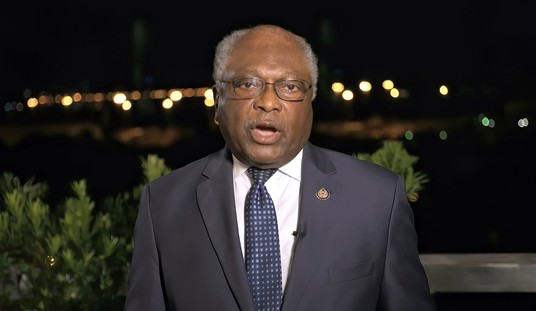In news coverage, I repeatedly see or hear a word that used to be alien to Americans since, historically, it is associated with authoritarian governments and centralized economies. That word is “shortages.”
Currently, there are 17 COVID-related shortages in major and minor consumer products and medical supplies but expected to be resolved, albeit with price increases. Included are new cars, chlorine, lumber, pet food, homes, chicken, and hotdogs, to name a few. Most formidable is a fuel shortage — already in play due to the lack of gas truck drivers (see more on that below) — but exacerbated by the oil pipeline cyberattack, on the verge of becoming a national security threat. Now, after paying ransom, the pipeline is slowly reopening, but supply vulnerabilities remain.
Aside from short-term commodity shortages, long-term non-COVID-related human resource shortfalls have plagued five major occupations for over a decade. Think of these career fields as steel beams supporting the societal infrastructure of a thriving market economy. Moreover, the cause and effect of such chronic workforce shortages are harbingers of an existential national crisis that will take herculean efforts to resolve. But if not resolved, national decline is inevitable. Let’s briefly examine the occupations.
Teachers
The K-12 teaching profession has been impacted by rapid cultural, societal, economic, and demographic changes, resulting in an ongoing teacher shortage severely accelerated by the pandemic.
Recommended
Recently, Frontline Research and Learning Institute conducted a national survey of 1,200 school and district leaders concerning all aspects of the severe shortage. Unfortunately, their findings “paint a grim picture,” and “only 7%” of the leaders believe the teacher shortage will improve.
The top three reasons cited are a shortage of fully qualified applicants, low compensation and benefits compared to other careers, and fewer education school graduates.
However, I know a few teachers who say the following reasons make their jobs a daily struggle and contribute to retention problems among new teachers: Parental interference, administrators’ demands, constraints on classroom discipline, and mixing students in the same classroom with the widest range of abilities, including special needs, and non-English speakers.
Then the overarching, often unstated reason for the shortage — a bittersweet by-product of the women’s movement when teaching used to be the go-to profession for female college graduates. Today women have unlimited career opportunities offering higher compensation.
Will higher salaries solve the problem? Somewhat. But the joy and status of teaching are diminishing. One recently retired teacher told me her job became increasingly challenging because “every year the kids had shorter attention spans.”
An effective public education system is the hallmark of a robust national economy, the great equalizer that lifts and launches all its young citizens. Teachers are the backbone, but that spine will crack unless radical changes are instituted to attract and retain new ones.
Truckers
The trucking industry is the life-blood of our national economy, moving 71% of all freight. Truckers’ vital role becomes apparent whenever severe weather interrupts grocery store deliveries. The current driver shortage is a growing crisis expected to worsen due to the projected number of retirements.
The shortage explains why I always hear trucking companies advertising for drivers on my car radio. According to a Fox Business report, “The American Trucking Association expects the need to hire roughly 1.1 million new drivers over the [next] 10 years or an average of 110,000 per year.”
This is not an easy line of work considering the training, skill, and time away from home, but decent pay and benefits offer a secure middle-class family income.
With the U.S. economy so dependent on truckers, a continuous shortage of drivers with fewer trucks on the road means their higher wages are ultimately passed along to consumers. The inflationary ripple effect is mindboggling, especially when higher gas prices figure into the equation.
Police
There are daily headlines about police retirements prompted by deadly incidents and defunding demands. But then at the other end is the challenge of attracting new officers. Nonetheless, recruitment, retention, and retirement were widespread, pervasive problems before the current round of deadly high-profile police incidents. Dive into this 2019 “Workforce Crisis” report from the Police Executive Research Forum and imagine how the crisis has accelerated.
In April, Jack Rinchich, president of the 4,000-member National Association of Chiefs of Police, described the demoralized state of mind among his rank and file, saying, “‘Hey, I’ve gone 20, 30 years without being sued, shot, or divorced. I’m going to get out while I have an opportunity.’”
The “thin blue line” keeping our nation from descending into chaos is projected to grow thinner. Therefore, out-of-the-box thinking is needed to attract new police applicants, along with a societal attitude adjustment returning policing to a respected and rewarding profession. Alternatively, (and worst-case scenario) if shrinking forces reach critical lows, expect the National Guard to be called up regularly — never a good sign in a benevolent, democratic nation.
Doctors
The pandemic showcased their role, and respect for the profession grew. Meanwhile, the projected shortage is in such critical condition that a Senate bill named the Resident Physician Shortage Reduction Act of 2021 was introduced in March to help alleviate the problem. According to AAMC (Association of American Medical Colleges), the “bipartisan bill aims to expand the number of federally-supported medical residency positions by 2,000 annually for seven years, directly addressing the growing physician shortage.”
The need speaks to AAMC data projecting a “physician shortage of between 54,100 and 139,000 doctors by 2033.” Age is also a problem, “more than two of five currently active physicians will be 65 or older within the next decade.”
Earning an MD title is a long, hard slog that takes exceptional brainpower, dedication, and emotional strength. But our nation is only strong when its people are healthy and productive. Thus, doctors are critical human infrastructure that needs replacing.
Nurses
This profession also played a starring role in COVID when much of the minute-to-minute work was in their purview. Meanwhile, the American Nurses Association projects a shortage of half a million registered nurses by 2026. Then, according to NursingWorld.org, “By 2022, there will be far more registered nurse jobs available than any other profession, at more than 100,000 per year. With more than 500,000 seasoned RNs anticipated to retire by 2022, the U.S. Bureau of Labor Statistics projects the need for 1.1 million new RNs.”
Besides retirement, the nursing shortage reflects the increased needs of an aging population. Add to that a shortage of nursing schools and faculty along with burnout on display during the height of the pandemic. The reality is that nursing is hard work, involves long hours, and requires a special person to enter and stay in the field.
Conclusion
Generally speaking, these five professions are suffering shortages due to the same problem, baby boomers are retiring with not enough replacements. All are traditional careers found less attractive by younger workers who can often make a good living with an internet connection from anywhere. These old careers require someone to leave home, go to a classroom, walk the street, hit the road, or enter a medical facility.
However, the needs of these professions are not diminishing but increasing. We often hear about workforce shortages, but these five point to a crisis requiring a new national focus emphasizing the old-fashioned concept of community service.

























Join the conversation as a VIP Member